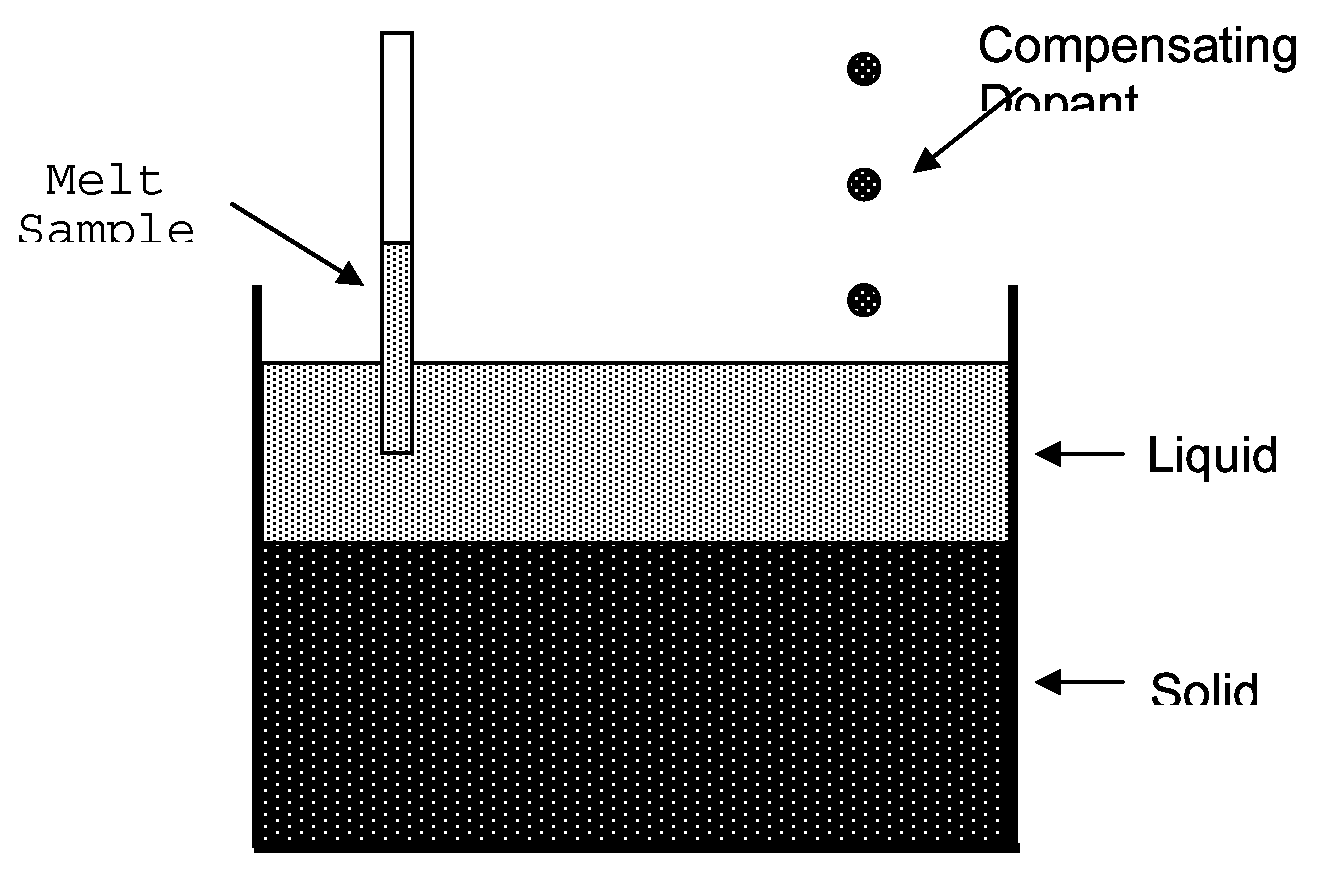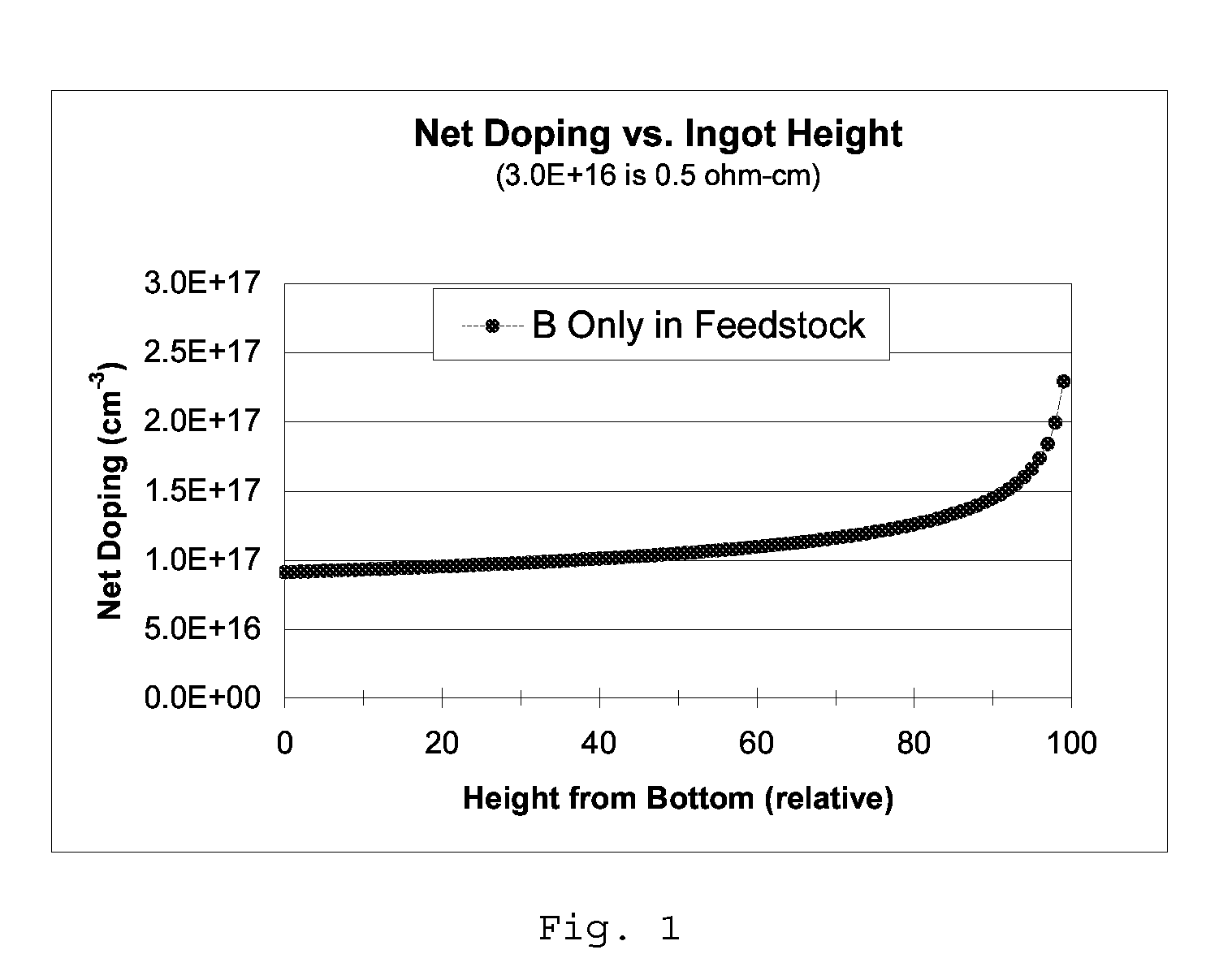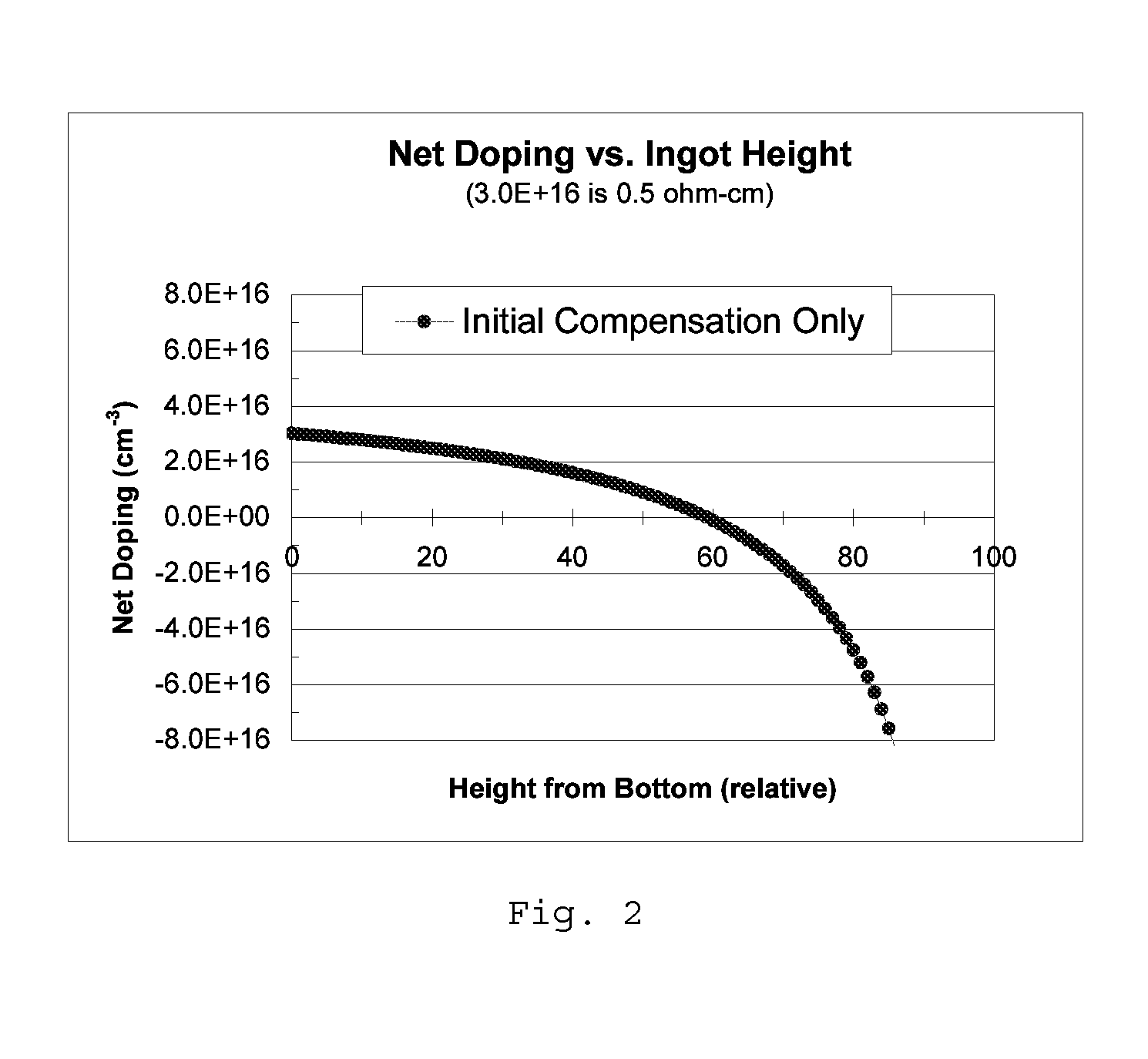Method for utilizing heavily doped silicon feedstock to produce substrates for photovoltaic applications by dopant compensation during crystal growth
a technology of dopant compensation and crystal growth, which is applied in the direction of crystal growth process, polycrystalline material growth, chemistry apparatus and processes, etc., can solve the problems of high cost of purifying silicon, insufficient effect of reducing dopant atoms to an acceptable level, and high cost of purification silicon. achieve good solar cell performance, high resistivity, and respectable efficiency
- Summary
- Abstract
- Description
- Claims
- Application Information
AI Technical Summary
Benefits of technology
Problems solved by technology
Method used
Image
Examples
example 1
Y BOOST FROM DOPANT COMPENSATION
[0050]A candidate silicon feedstock, identified as “Brand A-6N,” was procured. A GDMS analysis indicated a very high concentration of boron and phosphorus, with boron at 4.6 ppmw (12.0 ppma or 6.0×1017 cm−3) and phosphorus at 15 ppmw (13.6 ppma or 6.8×1017 cm−3). Note that the boron concentration in the feedstock is 20 times the maximum value desired in the silicon crystal (3.0×1016 cm−3). Troublesome metals were generally below their respective GDMS detection limits, with V below 0.005 ppmw, Li, Ti, Mn, Co, Ni, Ag, and W all below 0.01 ppmw, S, Cu, Zn, Ga, As, Mo, Sb, and Pb all below 0.05 ppmw, and Cr below 0.1 ppmw. Only Fe and Al were detected at 0.06 ppmw and at 0.32 ppmw, respectively. A full-sized ingot (ID 060206-2), with a mass of 265 kg, was produced at Solar Power Industries in a DSS (directional solidification of silicon) furnace using 225 kg of the Brand A-6N feedstock and 40 kg of undoped silicon. FIG. 5 depicts the expected net doping i...
example 2
ION OF MARKET-WORTHY CELL PERFORMANCE WITH INITIAL DOPANT COMPENSATION
[0054]In order to demonstrate the benefits of dopant compensation in a controlled manner, a full-sized (265 kg) silicon ingot was produced using intrinsic silicon with boron added at a concentration of 0.5 ppmw (6.5×1016 B / cm3). This represented silicon feedstock which had a residual boron content at a level which may be obtained by some low-cost purification processes. With a segregation coefficient of 0.80, the expected boron concentration at the beginning (bottom) of a directionally-solidified ingot is 5.2×1016 B / cm3. This is almost twice the maximum level of 3.0×1016 B / cm3 desired in a substrate for solar cells, and which would increase as the crystal grows as the melt becomes more highly concentrated in boron. To bring the net doping concentration into the desired range for this simulated impure feedstock, the excess boron was compensated with arsenic in the initial silicon charge. The purpose was to demonstr...
example 3
DOPING CONCENTRATION IN THE MELT AND SAMPLING THE MELT
[0061]Dendritic web silicon ribbon crystals were grown in Run SPI-101-5. The dendritic web crystal growth technique was different from the directional solidification technique employed in the above Examples in that crystals are grown at atmospheric pressure rather than at reduced pressure, the melt volume was much smaller at 0.3 kg rather than 265 kg, crystals were single crystal ribbon that exit the growth chamber rather than a multicrystalline ingot which remained inside the growth chamber, and melt volume remained approximately constant during a crystal growth run rather than decreasing during the run. It is also noted that operation at atmospheric pressure facilitated adding dopant to the melt and also sampling the melt.
[0062]The dendritic web growth run started with a 335 g melt to which 2.3×1019 boron atoms were added via silicon doped with boron to 0.0045 Ω-cm. The dendritic web crystal grown from this melt was measured to...
PUM
 Login to View More
Login to View More Abstract
Description
Claims
Application Information
 Login to View More
Login to View More - R&D
- Intellectual Property
- Life Sciences
- Materials
- Tech Scout
- Unparalleled Data Quality
- Higher Quality Content
- 60% Fewer Hallucinations
Browse by: Latest US Patents, China's latest patents, Technical Efficacy Thesaurus, Application Domain, Technology Topic, Popular Technical Reports.
© 2025 PatSnap. All rights reserved.Legal|Privacy policy|Modern Slavery Act Transparency Statement|Sitemap|About US| Contact US: help@patsnap.com



